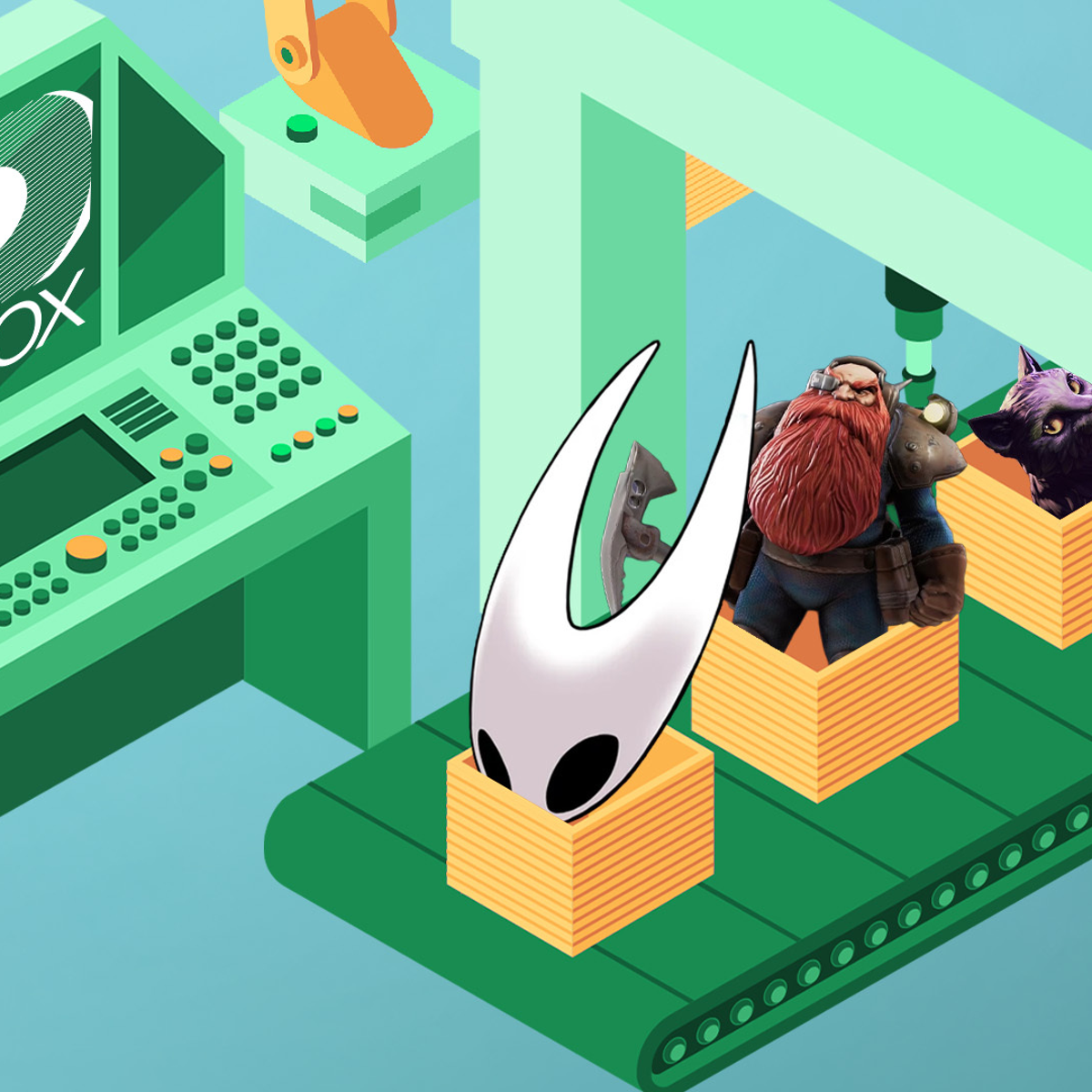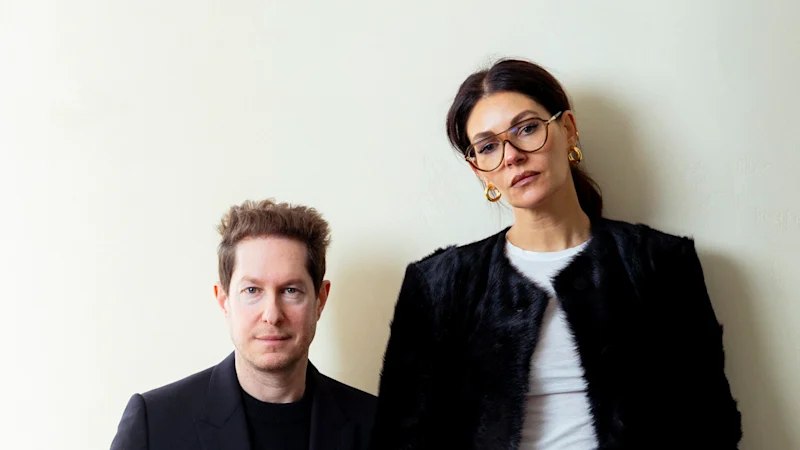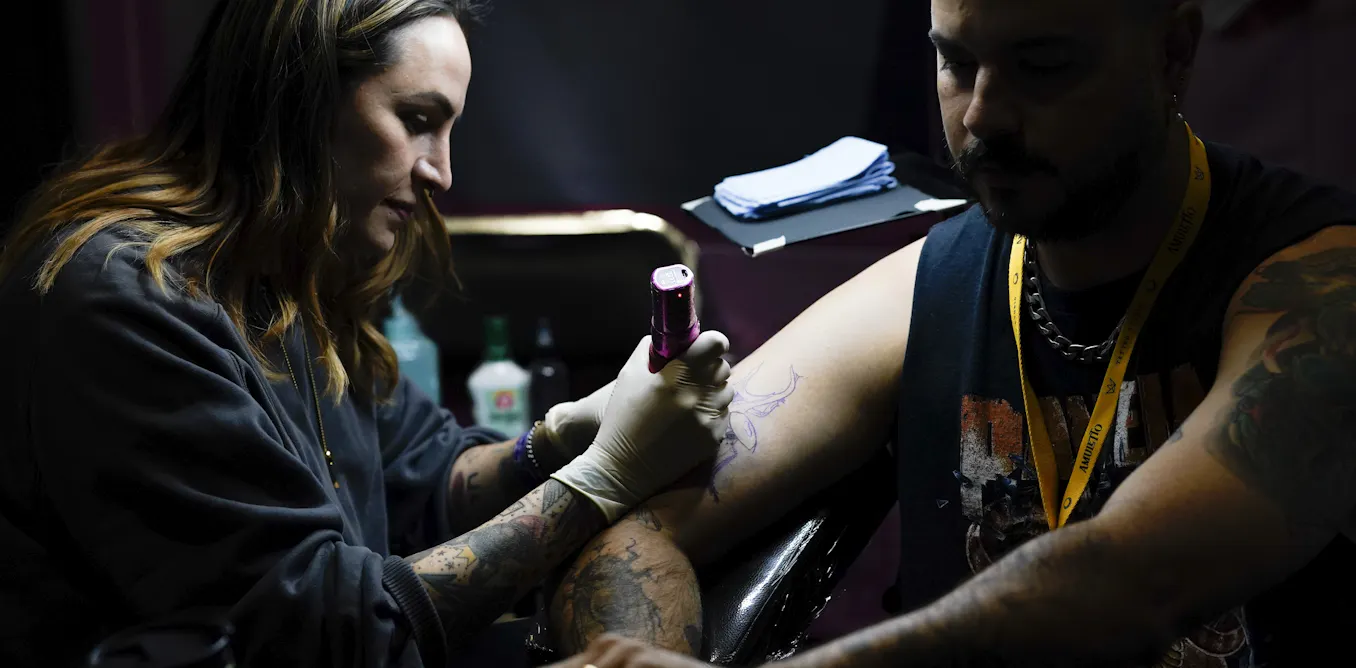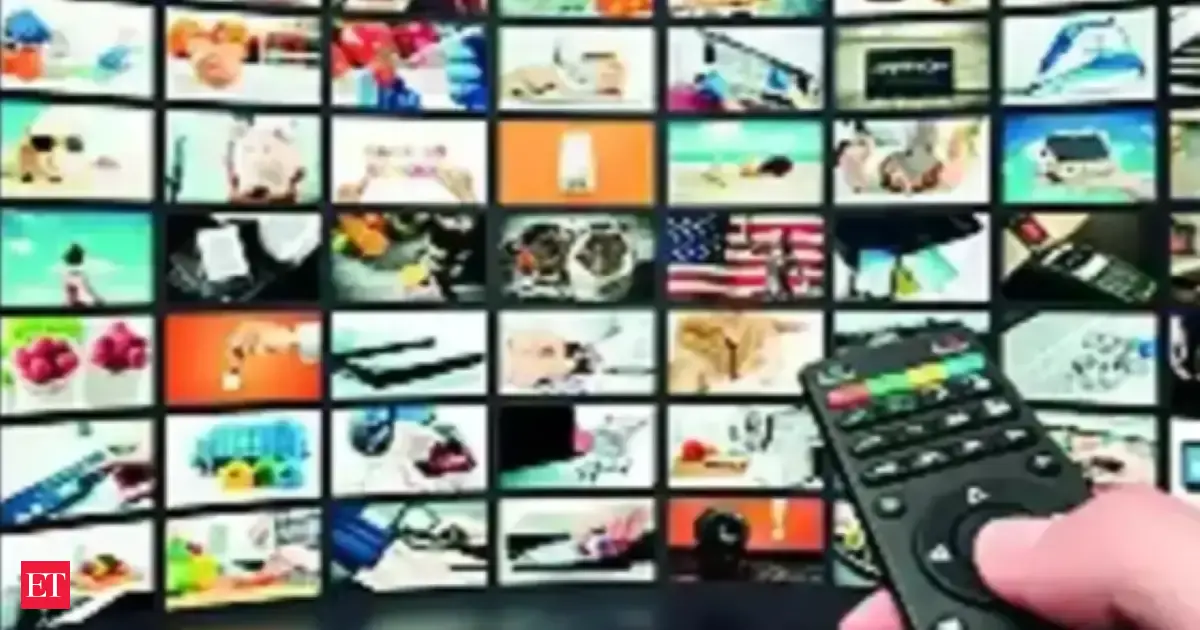“It was really hard to publish on Xbox. It was our job to make it easier” – inside Xbox’s increasingly vital indie publishing operation
By Alex Donaldson
Copyright eurogamer

My first major memory of Indie Games on Xbox platforms is a pleasant one, and it’s precisely the sort of memory I feel most appropriate for the medium. This was a tiny self-published affair – nary a publisher in sight, what I assume was a solo developer, and an extremely limited scope. I’m not talking about Hollow Knight, or Balatro, or Braid, or Limbo or what have you. I’m talking about Curling 2010.
Curling 2010 was exactly what it sounds like: a very simple indie recreation of the sport of curling. It was a drunken discovery, and in my circle of friends was almost exclusively played competitively when very liquored. To me, Curling stood alongside Mount your Friends as the absolute poster children of Xbox Live Indie Games, a rather brilliant little service that allowed pretty much anyone to develop Xbox 360 games using Microsoft’s XNA framework. Games would get peer reviewed and then could go live for a few bucks.
This service was surprisingly simple, shockingly democratised, and was the first signal of how serious Xbox was about allowing independent developers access to its platform; they let one person indulge their interest in Curling and put their game on Xbox 360.
While Xbox Live’s Community Indie games service never left the Xbox 360 and Microsoft never quite embraced such chaotic openness again, that system’s founding spirit was later channeled into Xbox One’s ID@Xbox program, which continues to this day. In 2025, ID@Xbox has seldom seemed more important to Xbox’s fortunes. The platform holder finds itself in choppy waters: first-party studio layoffs, second-party game cancellations, botched rescue deals and boycott calls fuelled by the actions of Xbox’s parent company. But you know what part of the Xbox ecosystem has been consistently rather good? ID@Xbox.
A glance around Xbox’s Gamescom stand last month serves as quite firm confirmation of that fact. The longest line was, of course, for Silksong. Even before the show opened to the public, I watched media and influencers denigrate themselves dashing to that queue, which ran for over an hour. On the other side of the stand, games like Super Meat Boy 3D and There are No Ghosts at the Grand dominated as partner titles. Some might uncharitably suggest that this stand is more representative of a particularly quiet year for Xbox’s first party games – but the truth is, Xbox shows have featured booths like this for a long time; each appearance a demonstration of an indie and third party relations setup firing on all cylinders.
“Some years there’s more indie games, some years there’s a few less – but every year it’s a discussion,” ID@Xbox boss Chris Charla tells me in the midst of the bustle and noise of the Xbox stand. We chat in a small aisle of the booth just adjacent to an indie-focused section where an early-morning queue is beginning to snake. The breadth of third-party titles on the booth, from late Japanese ports to all-new indies and hotly anticipated sequels, is meant to send a message.
“It is just really a recognition by Xbox of the absolute crucial need for diversity in our portfolio,” Charla adds.
Case in point: There Are No Ghosts at the Grand, the quirky debut title of Bristol-based developer Friday Sundae. Distinctly British, it took pride of place at Xbox’s Summer Games Fest and Gamescom presences.
“We never in our wildest dreams thought that we would be there,” shares Anil Glendinning, creative director at Friday Sundae on No Ghosts at the Grand. “And if we did, we thought it’d be in some tiny little booth hidden at the back of a distant hall, where nobody gets to see us! We did not ever in a million years expect to be right there, as part of Xbox, right there, hall 7 – and to have people waiting, like, an hour to play our game.
“Not as big as the queues for Hollow Knight, of course,” Glendinning laughs, “But it was extraordinary, and surreal, and a real item off the bucket list. As an indie dev, you couldn’t hope for a better start for introducing the game directly to gamers.”
The section towards the back-right of Xbox’s stand where No Ghosts at the Grand made its debut serves as a perfect example of the breadth of the relationships Xbox is trying to foster outside of its first-party ecosystem. Alongside No Ghosts there was Silksong, the indie that is so massive it no longer quite fits the term in the same way. Then there’s Invincible VS, which has a more traditional publishing arrangement but via the smaller-scale Skybound Games. PowerWash Simulator 2 is a sequel to a smash hit published by one of gaming’s biggest multinationals – but this time developer Futurlab is going it alone. Chinese developer Pawprint Studio showcased its Pokémon-alike Aniimo, and just off to the side were some of the fruits of Xbox’s development outreach efforts in Japan with a few late-but-welcome ports from Square Enix.
The point is, the stand paints a picture of a direction of travel for Xbox even as other aspects of their business appear much less certain. From smaller truly independent studios to start-ups with a little external investment and support, the word tends to be pretty universal, too: those who have had the opportunity to ply Xbox’s resources have found it invaluable.
“We’re an indie studio and small publisher so getting this level of support during key marketing milestones is huge for us,” says Mike Willette, executive producer on Invincible VS at new startup studio Quarter Up. “Having that kind of reach – especially during such a big-scale event – meant that fans around the world could connect with the Invincible VS. It was a big moment for the game and the reaction has been amazing to see.”
The enthusiastic attitude towards Xbox’s support raises a question, of course: how exactly Xbox decides which games are the chosen ones and which are less lucky. Even the most passing of glances at Steam’s statistics tells us there are now more games than ever – and the process of discovery is thereby ever more complicated. That’s true for the media, as we try to dig out cool games for readers – but it’s also obviously true for publishers, and consumers themselves. Charla says Xbox’s approach hasn’t changed in over a decade, however.
“We find them everywhere,” Charla says. “We find them by spending time in the Indie Arena [at Gamescom]. We find them by people sending us direct messages on BlueSky… We find them from people all around Microsoft being like, hey, have you seen this game? And we find them from having friends who make games who say – hey, you need to see my friend’s game. And from people just emailing us!”
In the end, Charla’s team works with hundreds of partners each year, reviewing what’s next in the world of indie or indie-adjacent gaming. This is a team that isn’t just looking for the next Hollow Knight, either – the hunt is on for all sorts of titles, in large part to ensure the breadth of releases on Game Pass. And while the idea of Game Pass as a universally ‘good thing’ remains in dispute, with some developers going as far as to call it unsustainable and damaging, Charla is bullish on the service – and its successes with indie developers.
“The majority of partners who’ve had a game in Game Pass want to bring their future titles to the service,” Charla notes. “As a result, we’ve signed deals with more than 150 partners to expand the catalogue. We continue to engage with hundreds of partners each year to review upcoming titles.”
“Last year, we worked with over 50 teams to sign their first Game Pass deal. This year marks our largest investment in Game Pass to date, and we remain focused on delivering the most exciting and diverse catalogue in gaming.”
The pathway of gradually ending up intertwined with Xbox and landing a Game Pass deal matches up to that described by Friday Sundae for No Ghosts at the Grand. In that case, the studio had put together a demo and had been showing it off to various potential partners, which included a submission to the Xbox team via a developer-focused website and form entry. It was, by Glendinning’s own admission, a “strange demo” – which tempered expectations.
“We didn’t expect to hear back,” Glendinning admits of that early No Ghosts at the Grand demo. “We went through those channels and then promptly forgot all about it. And in fact, when we got an email back… we thought it was spam! We weren’t completely sure it was real. But it was – it was someone within the Xbox team saying, yeah, we like your demo, we played it, we think it’s interesting, and we’d like to jump on a call. Since then, it’s been a blur.”
That whirlwind of Xbox’s involvement has been described to me variously by developers as useful from a nuts-and-bolts development perspective – in terms of gathering feedback and enjoying technological support – but also as a confidence-booster for the small teams involved. The attention of a much bigger partner can be useful or scary – but it can also be validating.
“We had to show Xbox progress during key milestones, i.e. demo the game for their partnerships team at critical moments to inspire confidence that we belonged on their support roster,” says Mike Willette of Invincible VS. “It was a good exercise for our dev team as well as something that helped us constantly elevate our own bar.”
“I just remember that Xbox was so curious about our creative process,” says Friday Sundae’s Glendinning. “They wanted to know where we wanted to take it, where our creativity was coming from, our vision for the game. Everything that we said to them, they came back with this enthusiasm. We’d keep sending – another email, some more screenshots, more videos, more content. Time after time, we were getting encouragement, support, and the thumbs up to keep on going.
“Having that kind of support was a huge confidence boost, y’know? We weren’t sure what we were making or whether anyone would be interested, or really like it. Hearing people within the Xbox team being excited, being encouraging, wanting to see more – that was a real shot in the arm of confidence for us. It really spurred the team forward to think: hey, you know what? We might actually have something here.”
There was another, secondary benefit, of course. “The biggest thing for us was getting access to those dev kits,” Glendinning notes. “It’s still hugely important for us knowing that we have Xbox there, having our backs if we run into any issues or problems. But the truth is, it’s actually been smooth sailing so far.”
A smooth journey for indie developers is something that is clearly a focus for Charla and his team. When asked about his team’s journey over the years – aside from the games themselves – the ID@Xbox boss instantly zeroes in on the technical changes that team has managed to institute across the Xbox platform, making adjustments that in many cases benefit everyone, indie or triple-A alike.
“It was really hard to publish on Xbox. It was our job to make it easier,” Charla says. “So when we first started ID@Xbox, we had a lot of asks.
“We had a lot of asks that were really indie specific, and we would go into these meetings with all these engineers – and we didn’t know anybody, right? These are business people. And we show up like, ‘Errr… ahh… we’re from ID’ – but as soon as we said that it was like ‘Oh, you’re the Indie guys! What do you need?!’ That level of support internally at Microsoft for independent developers has been off the charts forever from day one, and it continues today.
“Y’know, if we can save 12 hours on a game… hey, that’s great for everybody. It’s great for big publishers, but for an indie or maybe a solo dev – 12 hours is like a day and a half of work that you can use to theoretically materially make the game a day and a half better. There’s a lot of former developers on the team, and we really take that kind of thing to heart.”
Over the years, the focus has been on trying to make the act of getting games onto Xbox easier. But Charla now sees a new challenge. With an explosion in the sheer number of games, plus an ever-growing number of games in Xbox’s subscription service, it’s now about making sure games don’t get lost in the flood. His team is looking to make similar optimisations in this area as they once did to the process of onboarding developers in the first place.
“What if we put that discovery question on its head?” Charla asks. “How do we as a game platform help developers to discover their audience? So if you’re making a game of a certain quality… there’s an audience for that out in the world. Whether that audience’s total addressable market is 30 million or 3 million, or 300,000, or 30,000… How do we as Microsoft help you get in front of that total addressable audience?
“We want to show that audience your box art. Now, whether or not they click on the box, whether or not to buy the game, that’s a little dependent on the developer – on the box art, on the game, etc. But I think our job is to think about Discovery in a new way, which is, how do we ensure developers can discover their audiences?”
Some of this brings us full-circle. When I speak to Charla and the developers featured here, it’s either during or off the back of an Xbox Gamescom presence that has been all about connecting directly with players in-person. At Gamescom, from the perspective of these developers, Xbox’s support was invaluable.
“Having the opportunity to showcase Invincible VS on a global stage – especially in Europe – was huge,” says Mike Willette. “It was our first time seeing international fans interact with the game in-person, and that was incredibly rewarding. Seeing people’s reactions, watching them get a feel for the mechanics and feeling the excitement build up on the show floor – there’s really nothing like experiencing that.”
The challenge, then, appears to be taking that sort of energy and that discovery available in person at physical events and finding ways to deliver that on digital storefronts and the like. Charla’s vision – that discovery is a two-way street, as much about games finding audiences as it is about audiences finding games – is clearly a key lynchpin. As with ID@Xbox driving storefront and development backend changes that helped all, though, it’s clear that Xbox’s indie support will be key to this. Then there is the broader position in which Xbox finds itself, much of it undesirable – making this bright spot one whose continued luminescence is vital. Charla, at least, appears to believe he has the support and buy-in needed to do that.
“I remember one year, we had a bunch of games ready but we just weren’t showing them at this particular internal review. And a very senior executive, halfway through the review, looks at me and is like ‘where are the indie games?’,” the ID@Xbox boss recalls.
“I was like, ‘oh, don’t worry, they’re coming – next review! You know, the trailers tend to come along a little later for indies…’ But, it was cool for that question to be asked. It was a real moment where I reflected on it later and was just like – okay, I’m working in the right place.”



